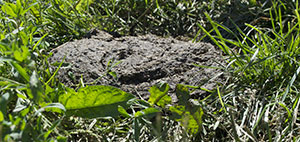 Cow activity, the amount of time spent eating and milk production are indicators of cow health, but another gauge of herd health is often overlooked and stepped over by producers.
Cow activity, the amount of time spent eating and milk production are indicators of cow health, but another gauge of herd health is often overlooked and stepped over by producers.I remember walking through my family's herd with the vet when I was young. Often, he would stop and, with a sleeved hand, pick up some manure, look at it and give it a sniff. At the time, I thought it was weird and gross; it was not until many years later that I realized the practicality of paying attention to cow manure as a method for monitoring cow health.
The Miner Agricultural Research Institute's April Farm Report reminded producers that monitoring cattle feces offers insight into the cow's ration, health and eating habits. In the article, they indicated three Cs of evaluating manure: color, consistency and content.
Color is largely affected by the type of diet that is being fed to the cattle so there is no one "right" color for manure. However, it is recommended that the color be fairly consistent among animals on the farm.
Consistency refers to the similarity of one animal's manure to its penmates'. If much difference exists, it might be a sign of high rates of sorting.
Analysis of content allows producers to realize the extent to which cows are digesting feed. Large, undigested particles in the manure suggests incomplete digestion in the rumen.
A scoring system exists to help define manure quality with the ideal score for a lactating dairy cow ranging from 2.5 to 3.5.
- Very runny manure. Often characterized by its arcing motion as it exits the cow. It is indicative of potential health concerns.
- Runny manure. This rating describes manure that is loose and often splatters. It measures less than 2.5 cm tall when on the ground.
- Porridge-like manure. This manure is often considered healthy, rising 4 to 6 cm off the ground when piled.
- Thicker manure. This type stands more than 5 cm off the ground and will stick to the toe of a shoe.
- Firm fecal balls. Often this type of manure suggests potential health issues or a need for a ration adjustment.

The author is the 26th Hoard's Dairyman editorial intern. This fall she will be a senior at Kansas State University in Manhattan, Kan. At KSU, Maggie is double majoring in agricultural communications and journalism and animal sciences and industry. Seiler grew up on a 130-cow registered Holstein dairy in Valley Center, Kan., near Wichita.








